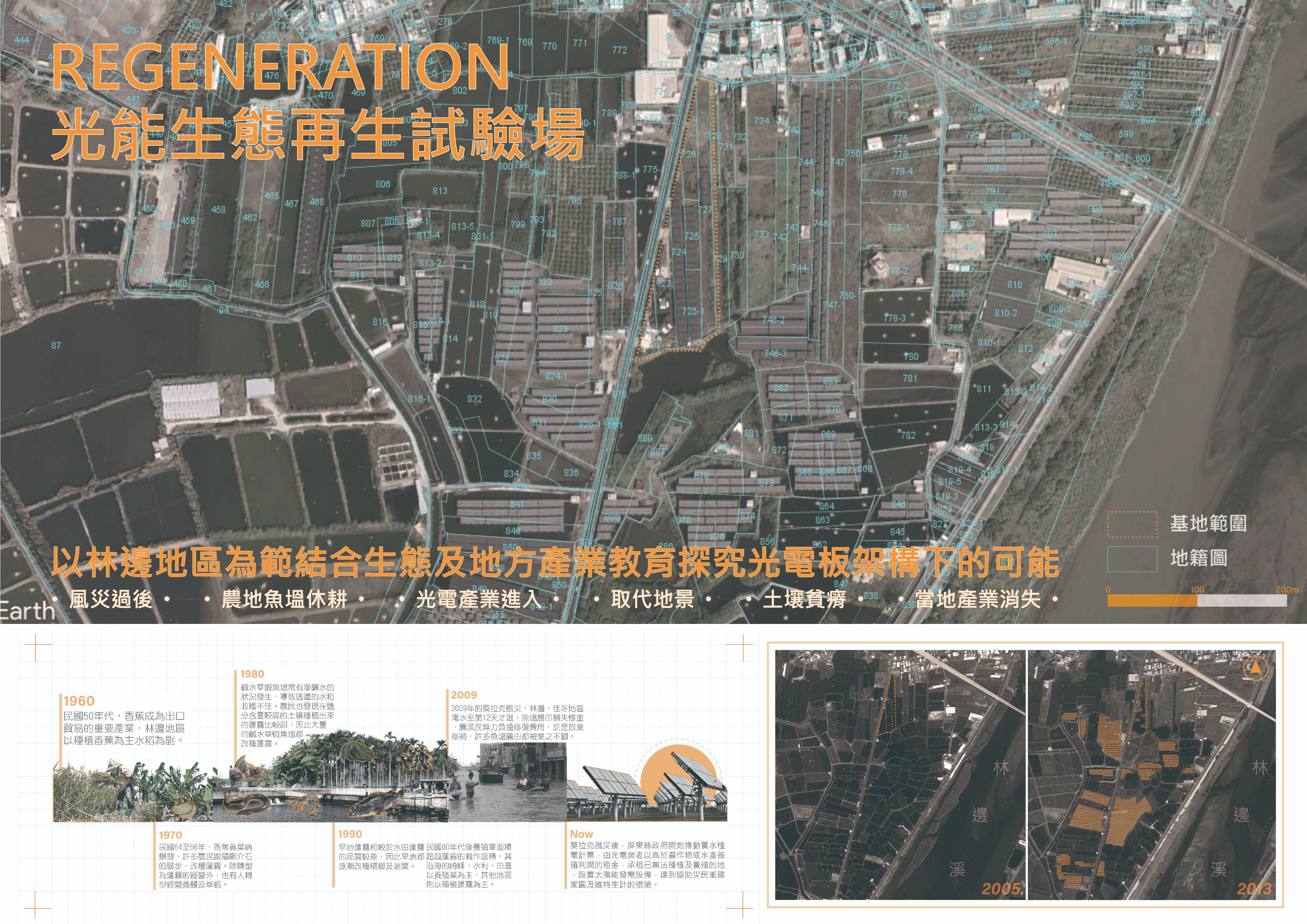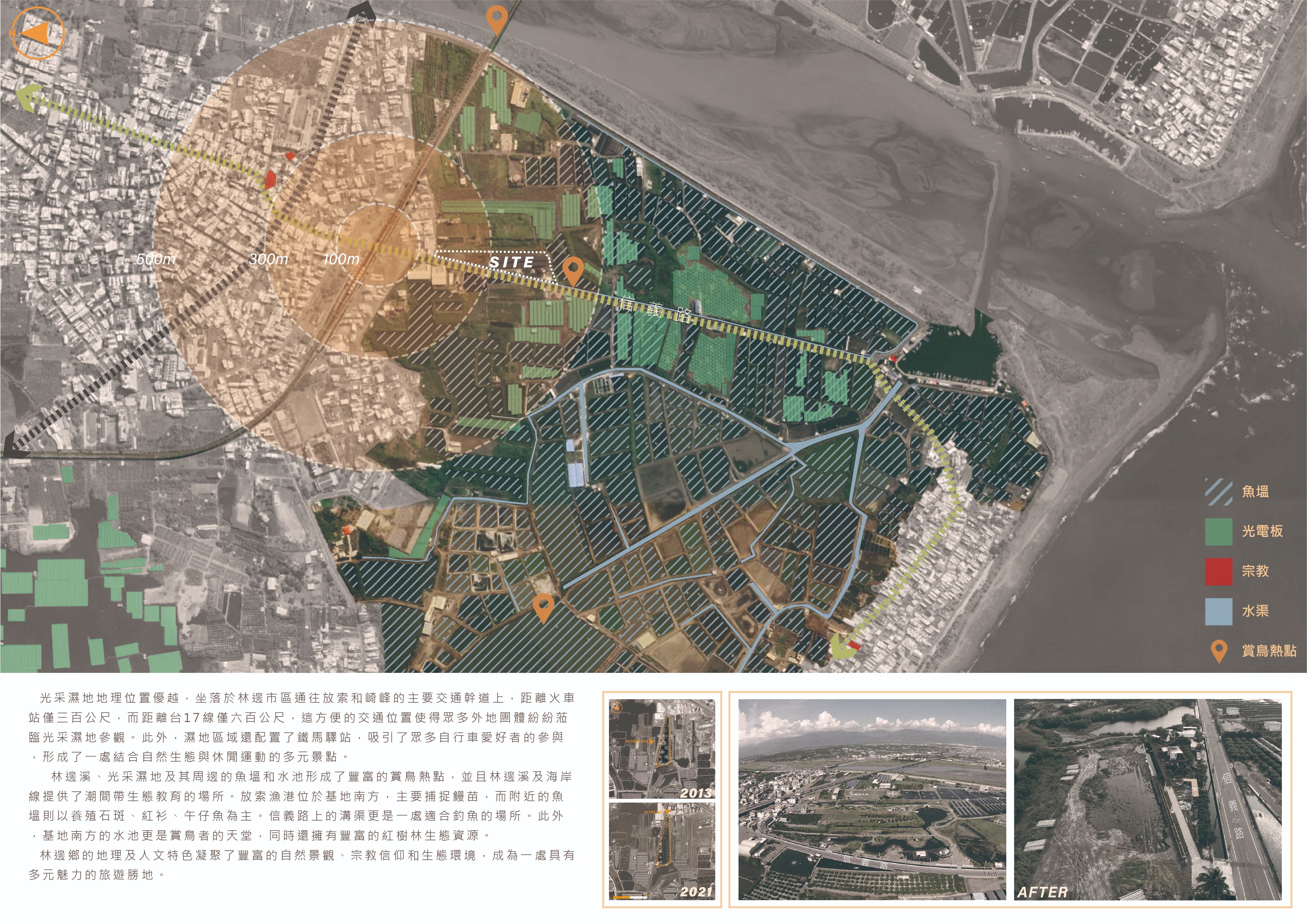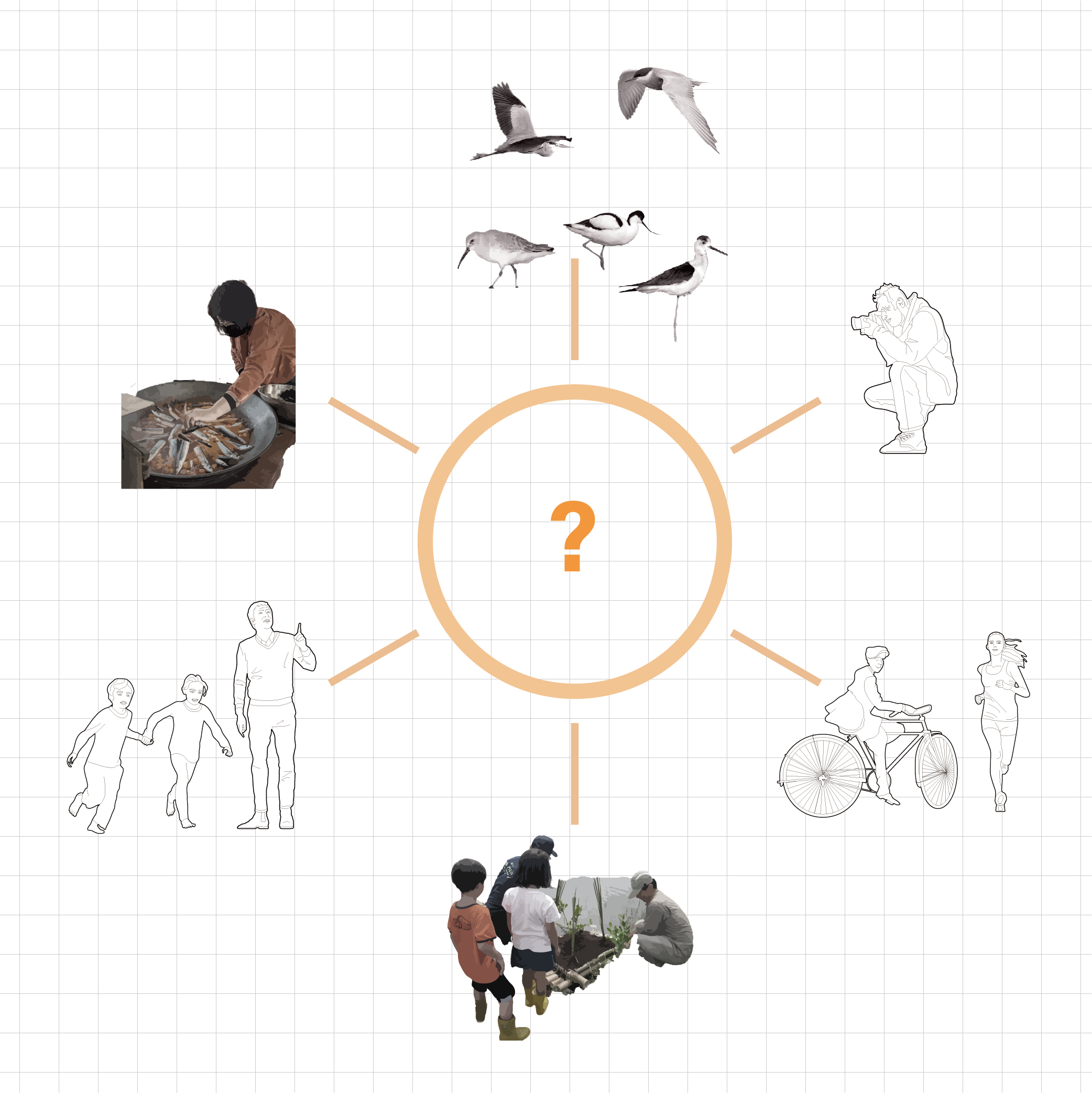




在這個由產業歷史和地景變遷交織而成的地區,林邊沖積扇平原所帶來的養殖業、蓮霧種植和地層下陷等元素深深地烙印在人們的記憶中。然而,2009年的莫拉克風災卻帶來了巨大的改變,生存條件的利誘推動著光電產業的崛起,逐漸淡化了養殖和農業的地景。光電板逐漸取代了漁塭和農地,將地方特色和產業願景漸行漸遠。
林邊的光采濕地在過去曾是漁電共生和光電板下農作實驗的環境教育場域。然而,當租約到期時,光采濕地也不例外地被光電板所覆蓋。這樣的變遷,不僅改變了地區的面貌,也使得曾經生機盎然的濕地失去了原有的光采。
假想時間倒流,在光電產業進入前,能夠透過設計塑造一個讓光電板和濕地、生態及產業共榮的生態環境教育場域。
In this region, where industrial history and changes in landscape intertwine, elements such as aquaculture, wax apple cultivation, and land subsidence brought by the Linbian alluvial fan plain are deeply imprinted in people's memories. However, the 2009 Morakot typhoon brought about significant changes. The lure of better living conditions has propelled the rise of the photovoltaic industry, gradually fading the landscape of aquaculture and agriculture. Photovoltaic panels have gradually replaced fishponds and farmland, distancing the local characteristics and industrial visions.
Linbian's radiant wetlands were once an environment where fisheries and photovoltaic panels coexisted, and agricultural experiments were conducted under the panels. However, when leases expired, the radiant wetlands were also inevitably covered by photovoltaic panels. Such changes have not only altered the region's appearance but also deprived the once-vibrant wetlands of their radiance.
In a hypothetical reversal of time, before the entry of the photovoltaic industry, it would be possible to design an ecological educational environment that fosters the coexistence of photovoltaic panels, wetlands, ecology, and industry, benefiting each other.